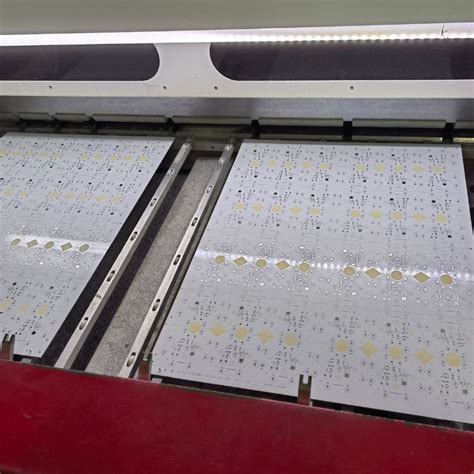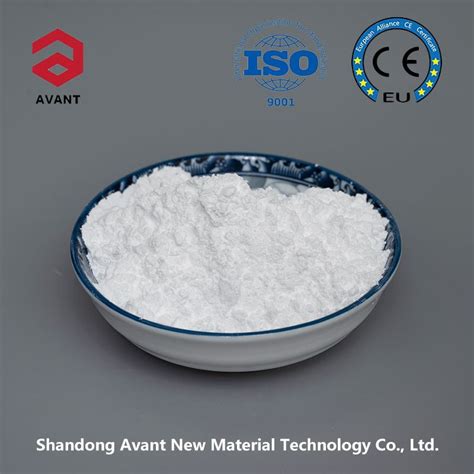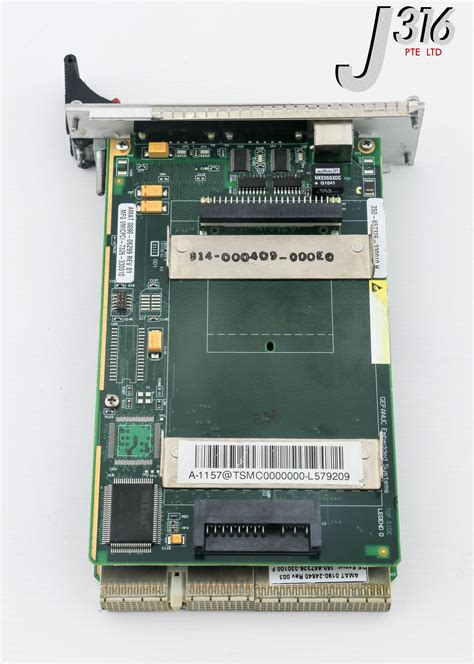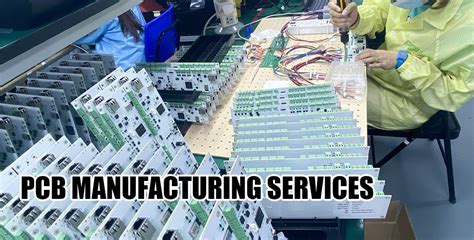Innovations in Alumina PCB Manufacturing for Modern Applications
Key Takeaways
In today’s rapidly evolving technological landscape, the significance of alumina PCB manufacturing cannot be overstated. As you delve into the world of printed circuit boards, you’ll find that pcb manufacturing techniques are undergoing remarkable innovations, particularly in the realm of alumina materials. This transformation is not just about improving performance; it’s also about addressing pcb manufacturing cost concerns which are critical for businesses striving to remain competitive. By leveraging the insights gained from top pcb manufacturing companies, you can better understand how advanced materials are significantly enhancing the thermal conductivity and mechanical stability of PCB designs.
Moreover, you should be aware that incorporating these innovative techniques into your pcb manufacturing business can lead to increased efficiency and sustainability, providing long-term benefits not only for you but also for the industry as a whole. Understanding these key takeaways could be pivotal as you navigate your own initiatives in this domain, ensuring that you remain at the forefront of modern electronics while effectively managing costs and enhancing performance.
Introduction to Alumina PCBs: Importance and Applications
In the realm of pcb manufacturing, alumina PCBs stand out due to their remarkable thermal, electrical, and mechanical properties. If you’re considering engaging with pcb manufacturing companies, you might discover that these specialized boards are pivotal in a variety of modern applications, particularly in industries that demand high reliability and performance. The ability of alumina substrates to handle significant heat loads makes them an ideal choice for high-frequency and high-power electronics. As you explore pcb manufacturing cost, it’s essential to understand how the initial investment in alumina PCBs can translate into long-term savings by improving the efficiency and durability of your electronic products.
One reason alumina PCBs are increasingly adopted is their critical role in sectors such as telecommunications, automotive, and aerospace. These industries require components that can withstand extreme conditions while maintaining performance standards. By integrating alumina PCBs into your pcb manufacturing business, you ensure that your products not only meet but exceed customer expectations for longevity and efficacy.
To provide a clearer picture, here is a comparison of key characteristics between alumina PCBs and traditional materials:
| Property | Alumina PCBs | Traditional PCBs |
|---|---|---|
| Thermal Conductivity | High (20-30 W/mK) | Moderate (1-10 W/mK) |
| Dielectric Strength | Excellent (≥ 15 kV/mm) | Variable |
| Mechanical Strength | Strong under high temperatures | Weaker under similar conditions |
| Weight | Heavier due to substrate materials | Lighter materials available |
By recognizing these attributes, you understand why alumina is becoming integral to innovative circuits where performance is paramount. As the landscape of electronics evolves, your knowledge about alumina PCB advantages can play a crucial role in guiding your decisions within the pcb manufacturing landscape.

Key Innovations in Alumina PCB Manufacturing Techniques
Innovations in alumina PCB manufacturing techniques have paved the way for enhanced performance in modern electronic applications. You might find that pcb manufacturing processes are increasingly adopting advanced methodologies such as laser drilling and fine-line technology, which allow for more precise component placement and reduced signal loss. These advancements not only improve the reliability of circuits but also enable pcb manufacturing companies to offer more compact and efficient designs. Furthermore, the introduction of multi-layered structures in alumina boards enhances thermal management, addressing critical challenges in high-performance environments. As you explore these innovations, consider how they affect the overall pcb manufacturing cost; improved techniques can result in significant reductions by optimizing resource usage and minimizing waste. Adopting these cutting-edge strategies can also bolster your pcb manufacturing business, as they position you at the forefront of technological advancements. By leveraging these techniques, you can ensure that your products meet the rigorous demands of today’s electronics market while remaining sustainable and cost-effective.
Advanced Materials Transforming Alumina PCB Performance
In the realm of alumina PCB manufacturing, the introduction of advanced materials is revolutionizing performance and efficiency. These innovations are not merely enhancements; they are critical for meeting the demands of modern electronics. For instance, the integration of high-purity alumina and improved ceramic composites significantly contributes to better thermal management, which is essential for high-performance applications. You may find that leading PCB manufacturing companies are prioritizing these materials to reduce the overall PCB manufacturing cost while increasing reliability and lifespan.
Additionally, advancements like surface finishes that enhance solderability and substrate designs that improve signal integrity can be encountered regularly in cutting-edge products. This transformation isn’t limited to just traditional applications. The push towards incorporating advanced materials supports innovations in industries such as aerospace and automotive, where durability and precision are paramount.
By keeping an eye on these trends, you can better understand how your investment in a PCB manufacturing business can adapt to evolving technology requirements. As these innovative materials continue to emerge, they promise not only to shape the performance of alumina PCBs but also to influence the entire landscape of electronic component design, making your next project using these advancements more viable than ever before. For further insights into effective PCB solutions, consider exploring Andwin’s offerings.

Environmental Impact: Sustainable Practices in Manufacturing
In today’s world, sustainability is more than just a trend; it is a necessity that drives pcb manufacturing companies to innovate and adapt. As you explore alumina PCB manufacturing, consider how advancements in sustainable practices are transforming the landscape of this industry. By opting for eco-friendly materials and energy-efficient processes, you can significantly reduce the pcb manufacturing cost while enhancing the overall quality of your products. For instance, many companies are now implementing techniques that utilize recycled materials, thereby minimizing waste and conserving resources.
Moreover, embracing automation not only boosts production efficiency but also allows for better monitoring of resource usage, reminding us how critical it is to align your pcb manufacturing business practices with eco-conscious strategies. You might find it rewarding to invest in technologies that support circular economy principles, ensuring that your operations are both economically viable and environmentally responsible.
“Sustainable manufacturing isn’t just good for the planet; it’s also good for business.”
As you make strides toward more sustainable methods, remember that your choices today will shape the future of alumina PCBs and their impact on modern applications. By prioritizing sustainable practices, your venture can lead the charge in creating innovative solutions while also being a part of the broader movement towards environmental stewardship.

The Role of Automation in Enhancing Production Efficiency
In the domain of alumina PCB manufacturing, automation has emerged as a game-changer, significantly boosting production efficiency. By integrating advanced technologies such as robotics and artificial intelligence, pcb manufacturing companies are streamlining various processes, from material handling to assembly. This automation not only reduces manual labor but also minimizes human error, which can often lead to waste and increased pcb manufacturing costs. For example, machines can now quickly and accurately place components on the board, ensuring higher precision in the final product. Additionally, automated quality control systems monitor output in real-time, allowing for immediate adjustments should any defects occur. This level of monitoring contributes to achieving superior performance standards that you would expect from a top-tier pcb manufacturing business. Moving forward, as automation technologies continue to evolve, you’ll likely see even more innovations that will further refine production techniques and enhance the overall quality of alumina PCBs, making them pivotal in meeting modern electronics demands.

Future Trends: What’s Next for Alumina PCB Technology?
As the demand for high-performance electronics continues to rise, your focus on alumina PCB manufacturing is essential to remaining competitive. The future of PCB manufacturing is set to unfold with innovative advancements that promise to refine both structure and function. Recognizing emerging trends will guide you in navigating the landscape of PCB manufacturing companies that prioritize adaptability and cutting-edge solutions. One significant trend is the integration of smart materials, which improve thermal conductivity and reduce overall weight, ultimately lowering PCB manufacturing costs. Emphasizing sustainability will also shape future business models, pushing companies toward eco-friendly practices that appeal to environmentally-conscious consumers while ensuring the efficiency of their PCB manufacturing business operations. Furthermore, advancements in automation technology will streamline production processes, leading to quicker turnaround times without compromising on quality—a pivotal aspect that you must consider in your planning for upcoming projects. By staying ahead of these trends, you position yourself well for future successes in the evolving world of alumina PCB technology.
Case Studies: Successful Applications of Alumina PCBs in Modern Electronics
The effectiveness of alumina PCBs in modern electronics is best exemplified through various case studies across diverse industries. For instance, in the automotive sector, leading PCB manufacturing companies have embraced alumina substrates for high-performance components that demand excellent thermal management. By using alumina PCBs, manufacturers can achieve optimal durability and reliability, essential for vehicles equipped with advanced driver-assistance systems (ADAS). Similarly, the telecommunications industry witnesses remarkable advancements with these boards, where the need for lightweight yet robust solutions drives the demand for efficient PCB manufacturing methods. These boards not only reduce overall PCB manufacturing costs, but also enhance signal integrity, crucial for communication infrastructure. Furthermore, in medical devices, alumina PCBs boast heightened precision and biocompatibility, ensuring that essential electronic components meet rigorous safety standards. As you explore these impactful applications, you’ll recognize how alumina PCB manufacturing is not merely about producing components but rather about fueling innovations across various realms. It’s clear that as the PCB manufacturing business evolves, alumina technology stands at the forefront of driving performance enhancements and meeting the sophisticated needs of modern electronics.
Conclusion
In the dynamic landscape of pcb manufacturing, you may find that the advancements in alumina PCB technology are transforming the industry. The innovative techniques introduced by leading pcb manufacturing companies are not only reducing the pcb manufacturing cost but also improving overall performance and reliability. As you consider entering or expanding your pcb manufacturing business, it’s essential to recognize that these developments are shaping the future of electronics, where efficiency and sustainability are paramount. With a growing emphasis on advanced materials and cutting-edge processes, you can harness these innovations to stay competitive in a rapidly evolving market. Embrace this opportunity to enhance your offerings and align with modern application requirements, ensuring that your role in this sector is both impactful and forward-thinking.
FAQs
What are alumina PCBs?
Alumina PCBs, or Printed Circuit Boards, are specialized circuit boards made from alumina ceramic materials. They offer excellent thermal conductivity, high dielectric strength, and superior electrical insulation, making them ideal for applications requiring durability and performance.
How do I choose a reputable alumina PCB manufacturer?
You should look for pcb manufacturing companies that have a proven track record in quality and innovation. Check their certifications, client testimonials, and portfolio of past projects to ensure they meet your specifications.
What factors affect the cost of alumina PCB manufacturing?
The pcb manufacturing cost can vary based on materials used, complexity of the design, quantity of production, and additional services such as assembly or testing. It’s crucial to get detailed quotes from different manufacturers to find the best value for your project.
Are there sustainable practices in alumina PCB manufacturing?
Yes, many pcb manufacturing companies are adopting sustainable practices like recycling materials and optimizing processes to reduce waste. By choosing manufacturers committed to these practices, you support environmentally friendly initiatives.
What is the typical lead time for alumina PCB production?
Lead times can vary significantly depending on the pcb manufacturing business, but generally range from a few days to several weeks depending on factors such as order complexity and batch size. Always confirm lead times during your initial discussions.







